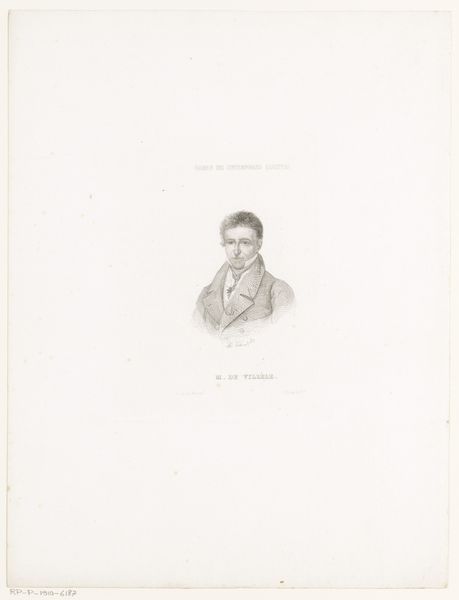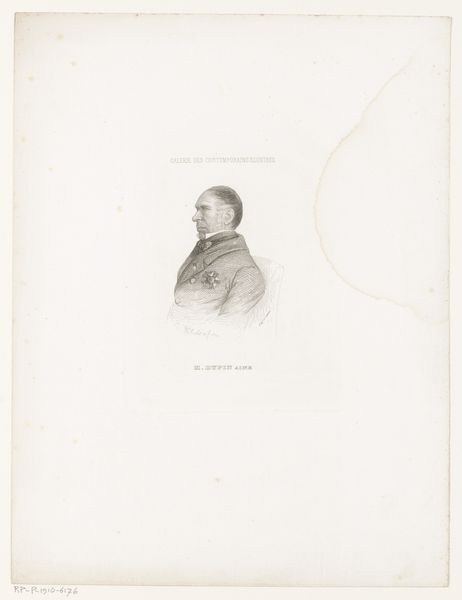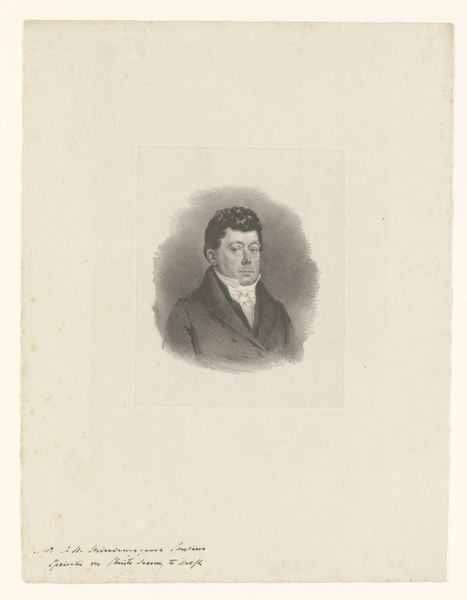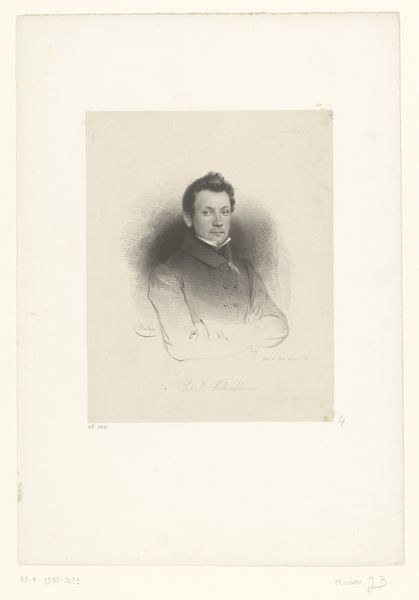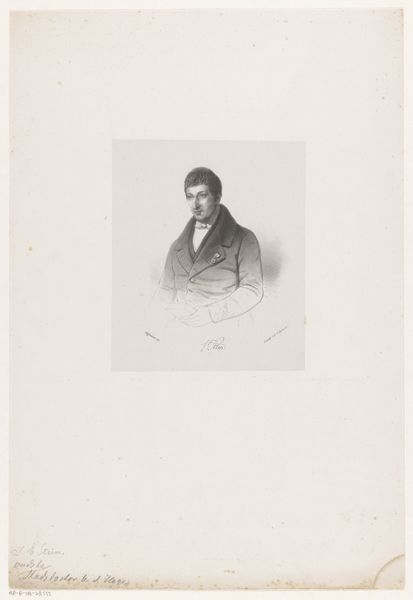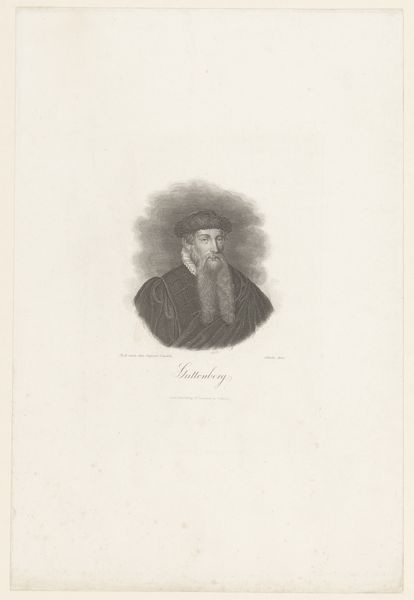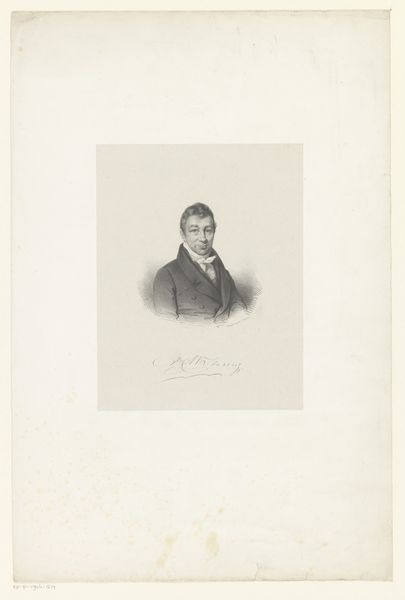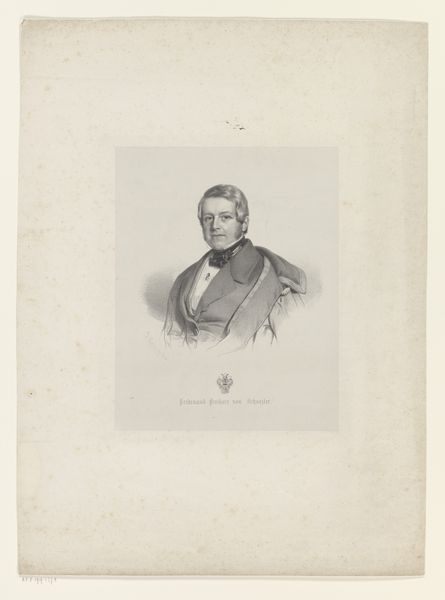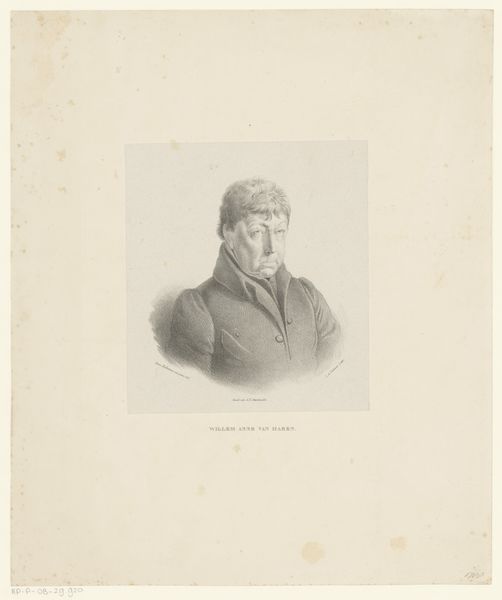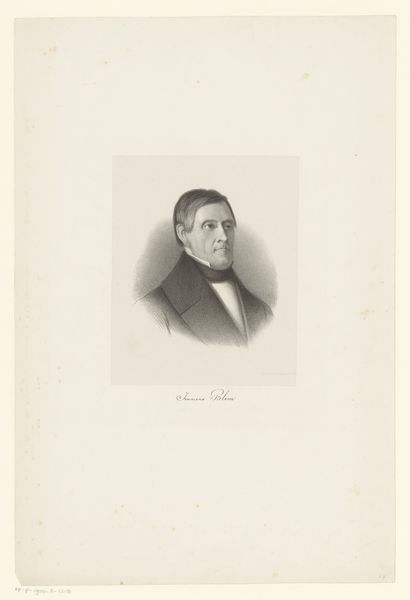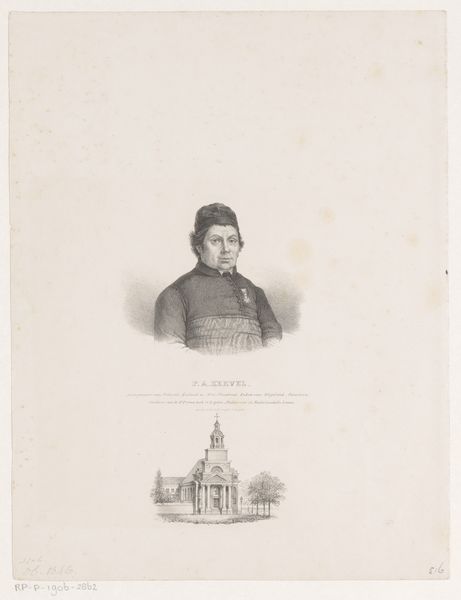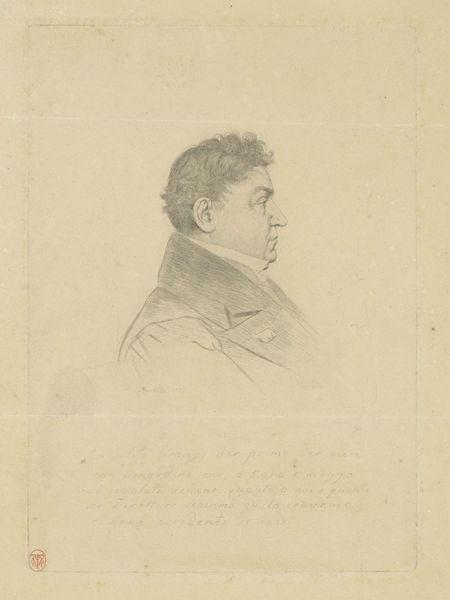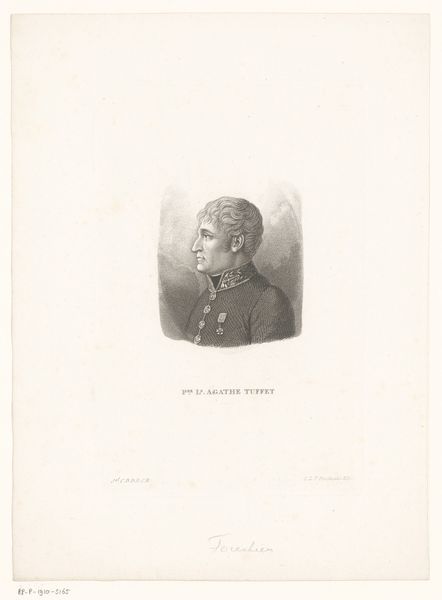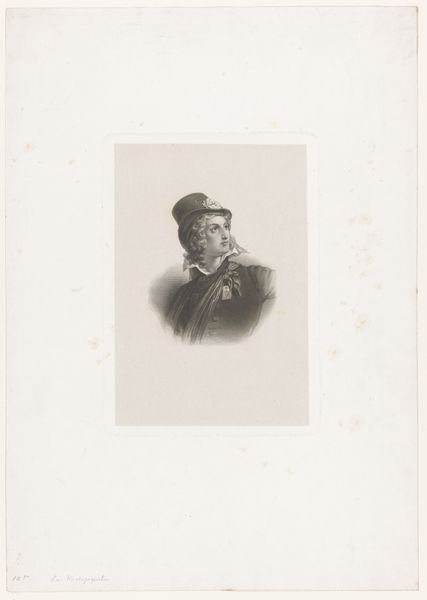
drawing, print, paper, graphite, engraving
#
portrait
#
pencil drawn
#
drawing
#
aged paper
#
neoclassicism
# print
#
old engraving style
#
paper
#
graphite
#
engraving
Dimensions: height 491 mm, width 317 mm
Copyright: Rijks Museum: Open Domain
Curator: This is a portrait of Petrus Antonius Kervel. It's a drawing made between 1827 and 1880 by Franciscus Bernardus Waanders and it's now part of the Rijksmuseum collection. The artwork seems to be a combination of graphite, engraving, and print on paper. Editor: My first impression is the aged quality of the paper; it evokes a sense of looking into the past. There is a delicacy to the drawing, almost fragile. Curator: Indeed, and it reflects the aesthetic conventions of the time. Portraiture during this era served significant social functions, reinforcing status and memorializing individuals. This engraving offered a method of wider dissemination of the image, wasn’t necessarily about celebrating Petrus as an individual, but about solidifying his place within a specific societal framework. Editor: Looking at the clothing and cap he is wearing, who was Petrus Kervel and what does this tells us about his standing in society? I wonder what layers of identity and experience he embodies within that single, composed image. Curator: Petrus Antonius Kervel was likely a figure of local or regional importance, perhaps a respected member of the community or a person of some civic standing. The artist, Franciscus Bernardus Waanders, created quite a few portraits of men of status around that period. The Neoclassical style is evident, look at the clear lines, the emphasis on realism and perhaps an idealized presentation of the sitter, which was quite fashionable back then. Editor: The gaze is quite direct, creating a sense of connection despite the historical distance. However, it is the lack of background that raises interesting questions. Stripped of context, we are left to wonder what parts of Petrus’ life are made visible here, and what remains intentionally obscured. Curator: That’s where the historical context becomes crucial. This style, while seemingly neutral, subtly reinforces power structures. The portrait's purpose wasn't just about representation but also about the projection of authority and stability during a period of considerable social change. It makes me consider the museums purpose for having such images today. Editor: It makes me consider portraiture beyond celebrating men of status in isolation, but also think how their representation excludes many other stories and people. Art must serve a deeper commitment to equality and truth, so we avoid just repeating history's inequities. Curator: A worthwhile aspiration for the public role of art and museums today. Thank you for sharing that critical reading! Editor: And thank you, it’s vital we understand these works not in isolation, but as part of ongoing dialogues about identity, representation and social change.
Comments
No comments
Be the first to comment and join the conversation on the ultimate creative platform.
